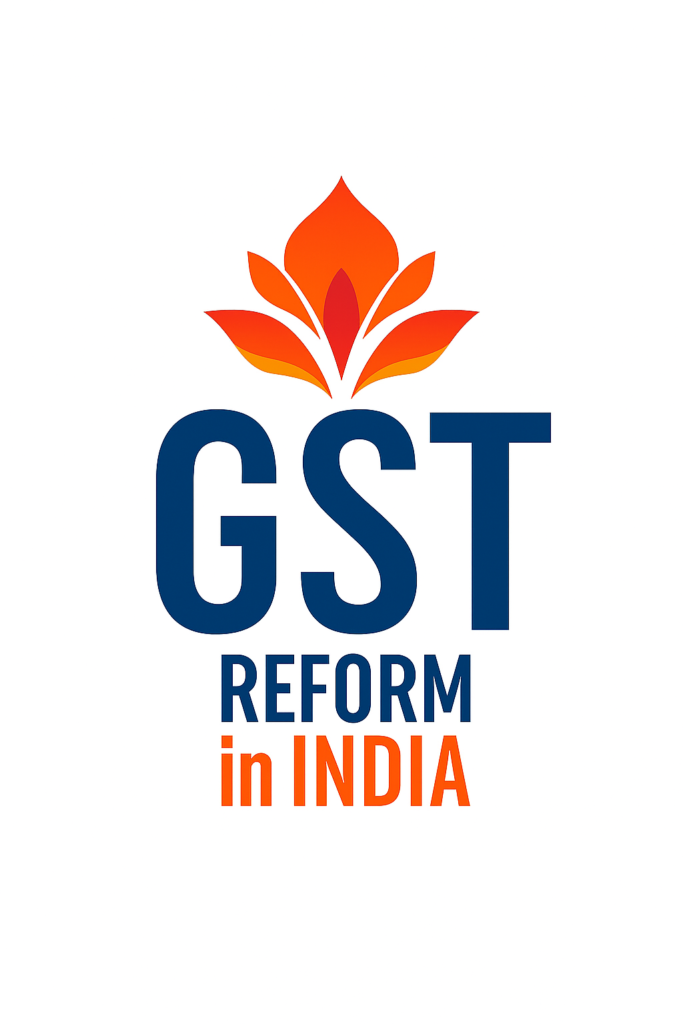India’s GST Reform 2025: Powering Growth

Theme: The October 2025 GST and consumption-tax reforms aim to lower prices, streamline tax rules for businesses, and boost India’s economy ahead of the festive season—though challenges like revenue loss and short-term adjustment hiccups remain. Introduction: Taxes affect every Indian—whether we’re buying a smartphone, dining out, or booking tickets online. This October, the government is launching one of the most significant tax reforms in years, focusing on Goods And Service Tax and consumption taxes. The aim is simple: make goods and services more affordable, encourage spending, and relieve businesses from complex tax structures. Yet, as with any major reform, it comes bundled with both benefits and challenges. Let’s unpack it in clear, accessible language. What is GST? The Goods and Services Tax is a unified indirect tax system introduced in India on July 1, 2017. It replaced multiple state and central taxes such as excise duty, service tax, and VAT, creating a “One Nation, One Tax” structure. It is levied at every stage of the supply chain but is designed to avoid “tax on tax” through input tax credit. It is collected under different rate slabs (0%, 5%, 12%, 18%, and 28%). The 2025 reform focuses on simplifying these slabs and making the system easier for both businesses and consumers. Key Reform Measures in October 2025- GST Rate Overhaul – The 28% slab (applied to items like cars and appliances) is set to be abolished. Many goods previously in the 12% bracket—such as butter, juices, and dry fruits—will move to 5%. Small cars may see rates fall from 28% to 18%. Simplified Slabs – The proposal simplifies tax slabs to primarily two: 5% for essentials and 18% for most other goods, with a special 40% slab reserved for luxury or sin goods like tobacco and pan masala. Reduced Consumption-Tax Levies – In addition to GST cuts, supplementary levies (cesses and excise) on daily-use goods may also be reduced to promote household spending—though specific details are still pending approval by the GST Council. Festive Timing – Drafted to align with Diwali and the year-end festive period, the reforms are strategically timed to capitalize on India’s seasonal spike in spending. Implications for Demand and Growth- Boosting the Economy – Consumption accounts for about 60% of India’s GDP. Cutting taxes will likely increase demand, production, and, ultimately, economic growth. IDFC FIRST Bank projects a potential 0.6-percentage-point lift in nominal GDP over the next year. Offsetting Global Pressures – With rising U.S. tariffs on Indian exports, enhancing domestic consumption can reduce reliance on external markets. Simplifying for Businesses – Fewer slabs and clearer rules mean reduced classification errors and disputes, especially for MSMEs, improving ease of compliance. Political Timing – overhaul ahead of elections or festive seasons often translate into public goodwill—and potentially political advantage for the incumbent government Reuters. Impact on Stakeholders- Consumers: Expect lower prices on essentials, gadgets, and services. Festive spends—from clothes to meals—may feel less taxing. Businesses: Anticipate easier compliance, fewer disputes, and clearer GST categorization. Economy at Large: Stimulated spending could drive production, support employment, and strengthen growth in the long term. Expert Insights and Assessments on GST Reform- Emkay Research forecasts a temporary rise in the fiscal deficit by about 0.2%, but anticipates long-term economic growth to offset this strain. UBS estimates an annual revenue loss of approximately ₹1.1 trillion (~0.3% of GDP), yet considers the impact manageable. Morgan Stanley sees the reforms as a strong catalyst for domestic demand and consumption, reinforcing India’s long-term consumption story. Future Outlook- This isn’t the finish line; rather, a testing ground. If spending rises without dramatically hurting revenue, deeper reforms—like a permanent two-slab system (5% and 18%)—could follow. Implementation Clarity – Detailed guidelines and swift communication will be essential for businesses to adapt smoothly. Technology Integration – Expanding digital compliance tools can help reduce errors, improve transparency, and curb tax evasion. Support for SMEs – Small and medium enterprises may need training, financial support, and simplified processes to fully benefit. Monitoring Impact – Regular reviews and feedback from industry bodies will help track whether the overhaul is meeting its objectives. Balancing Revenue Needs – The government must ensure that reduced tax collections from lower GST rates are balanced by higher consumption and compliance. Global Competitiveness – Aligning GST with international best practices can make Indian goods and services more competitive globally. Long-Term Vision – Beyond short-term relief, the overhaul should lay the foundation for a robust, predictable, and business-friendly taxation system. Potential Benefits of Reform- Affordable Prices – Lower Tax translates to cheaper goods and services—ideal during festive shopping. Consumption Surge – Reduced prices often lead to higher spending, lifting sectors like retail, e-commerce, and dining. Business Ease – Simplified slabs mean fewer disputes and easier bookkeeping, benefiting especially small businesses. Support for Domestic Industry – Domestic producers gain a competitive edge over imports, particularly in durables. Start-up-Friendly – Simplified compliance frees start-ups to focus more on growth and innovation. Potential Challenges of Reform- Revenue Loss – ₹1.1 trillion annually (0.3% of GDP) could strain state budgets and social spending in the short term. Unequal Gains – Benefits may skew toward urban, middle-class consumers; luxury goods remain heavily taxed. Re-Inflation Risk – Sudden demand spikes could reignite inflation if supply doesn’t match consumption. Implementation Challenges – Updates to billing systems, training officials, and communicating changes may cause early confusion. Initial Disruption – As seen in the 2017 rollout, the early months could see classification and compliance problems. Quick Facts and Figures- ₹1.1 trillion – Estimated annual revenue loss from GST cuts (~0.3% of GDP). 0.2% increase in fiscal deficit expected in the short term. 60% of India’s GDP comes from domestic consumption. 0.6 percentage point boost in nominal GDP likely in FY26 due to higher demand. ≈99% of items in the 12% Tax slab may shift down to 5%. 90% of items in the 28% slab (small cars, electronics, durables) may move to 18%. Two-slab structure (5% & 18%) being tested as a step toward long-term GST simplification. Festive
